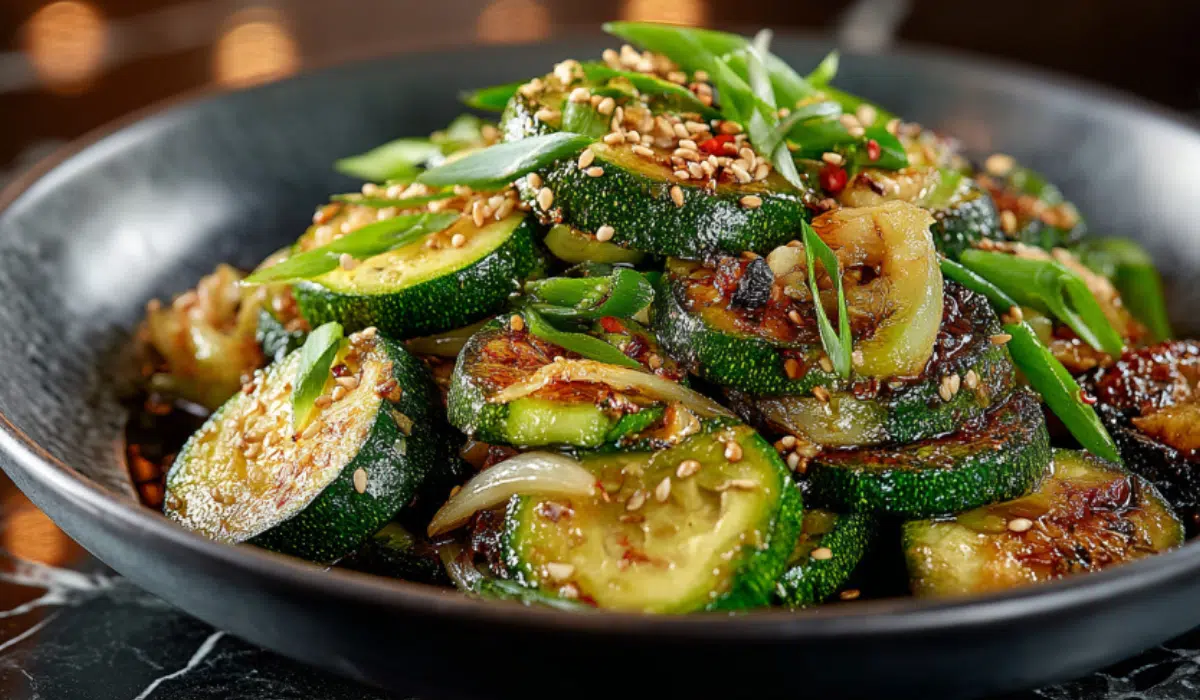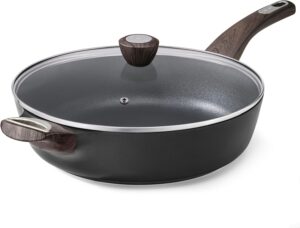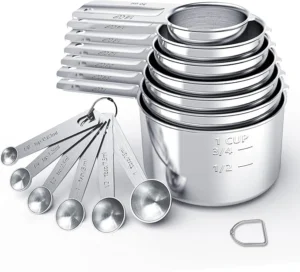Hibachi zucchini brings the sizzling charm of a Japanese steakhouse right into your kitchen. Tender-crisp zucchini and sweet onions cook quickly with garlic, ginger, and soy sauce, creating a flavorful side that pairs with almost anything. This recipe shows you how to capture that restaurant-style taste in minutes using simple ingredients and a single pan. With just a few smart techniques, you’ll get zucchini that’s golden on the outside, perfectly tender inside, and irresistibly savory.
Table of Contents
Why You’ll Love This Hibachi Zucchini
- Quick and easy: Ready in under 15 minutes, perfect for busy weeknights.
- Simple ingredients: Everything comes from your pantry or a quick grocery stop.
- Authentic flavor: Garlic, ginger, and soy sauce mimic the signature steakhouse taste.
- Versatile pairing: Goes with fried rice, noodles, steak, shrimp, or chicken.
- Consistently tender-crisp: With the right pan heat, you’ll get zucchini that’s never mushy.
Unlike other vegetable sides, this one brings bold flavor without heavy sauces or long prep. It’s the kind of dish that makes your table feel like a hibachi grill experience at home. Whether you’re cooking for yourself or serving guests, this zucchini will disappear fast.
Ingredients Needed For Hibachi Zucchini Recipe
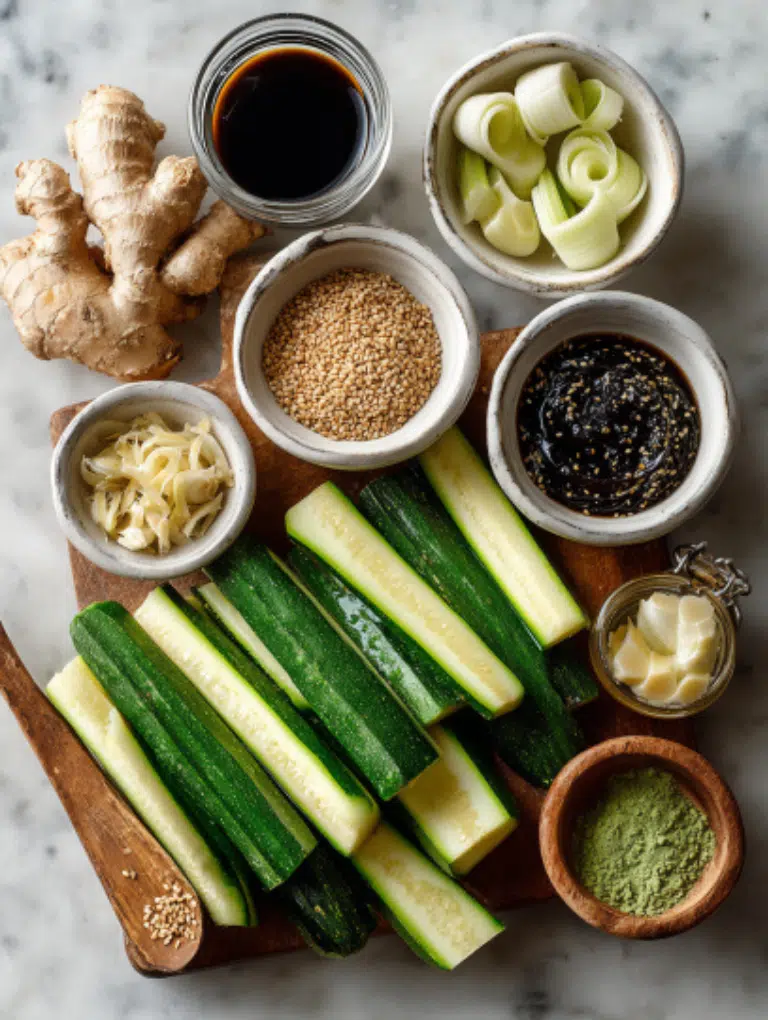
Vegetables
- 1 large zucchini, cut into 2-inch sticks
- 1 small onion, sliced into petals
Aromatics
- 1 teaspoon minced garlic
- 1 teaspoon ginger paste (tube or freshly grated)
Sauce & Seasoning
- 2 tablespoons low-sodium soy sauce
- 1 tablespoon sesame oil
- 1/2 teaspoon salt
- 1/4 teaspoon freshly ground black pepper
Cooking Oil
- 1 teaspoon vegetable oil (neutral, high smoke point)
Garnish (Optional)
- 1 tablespoon toasted sesame seeds
Notes & Substitutions
- Zucchini: Yellow squash works just as well for color contrast.
- Onion: Sweet onion gives a milder flavor, while red onion adds sharper notes.
- Soy sauce: Tamari or coconut aminos are good gluten-free swaps; read labels, as the Celiac Disease Foundation notes many sauces may include wheat-based soy sauce.
- Sesame oil: Use toasted sesame oil for deeper flavor, or a splash of olive oil if you prefer lighter taste.
- Garlic & ginger: Fresh versions provide sharper bite; powders work in a pinch but reduce aroma.
How to Make Hibachi Zucchini
- Heat the pan: Place a large skillet or wok over medium-high heat. Add the vegetable oil and let it heat until shimmering this ensures a quick sear instead of steaming.
- Cook the onions: Add the sliced onion petals and sauté for about 4 minutes. Stir often until they turn slightly translucent and begin to caramelize. This step builds a sweet flavor base.
- Add aromatics: Stir in the garlic and ginger. Cook for 1 minute, just until fragrant. Be careful not to burn them garlic turns bitter if left too long.
- Sear the zucchini: Add the zucchini sticks in a single layer. Cook for 3 minutes, stirring occasionally. Avoid crowding the pan to keep the zucchini tender-crisp with golden edges.
- Season and glaze: Pour in the soy sauce and sesame oil. Sprinkle with salt and pepper. Toss well to coat the vegetables evenly. Cook for 2 more minutes until the sauce lightly reduces and clings to the zucchini.
- Finish and serve: Transfer to a serving dish and sprinkle with toasted sesame seeds for a nutty crunch. Serve immediately while warm.
Pro Tips & Troubleshooting
Expert Tips
- Cut size matters: Slice zucchini into even 2-inch sticks so they cook uniformly and keep a tender bite.
- High heat, quick cook: Use medium-high heat to sear fast. This prevents watery vegetables and locks in flavor.
- Garlic timing: Always add garlic near the end of cooking onions it burns quickly if added too soon.
- Batch cooking: If doubling the recipe, cook zucchini in batches to avoid overcrowding.
Common Mistakes to Avoid
- Overcrowding the pan: Too many pieces at once steam instead of sear, leaving soggy results.
- Overcooking zucchini: Extra minutes on the heat turn zucchini mushy. Stop cooking when edges are golden but centers still firm.
- Too much salt: Soy sauce already adds saltiness, so taste before adding more.
Quick Shortcut
Short on time? Use pre-cut zucchini sticks from the produce section and a squeeze of prepared ginger-garlic paste to cut prep in half.
Serving, Storage & Variations
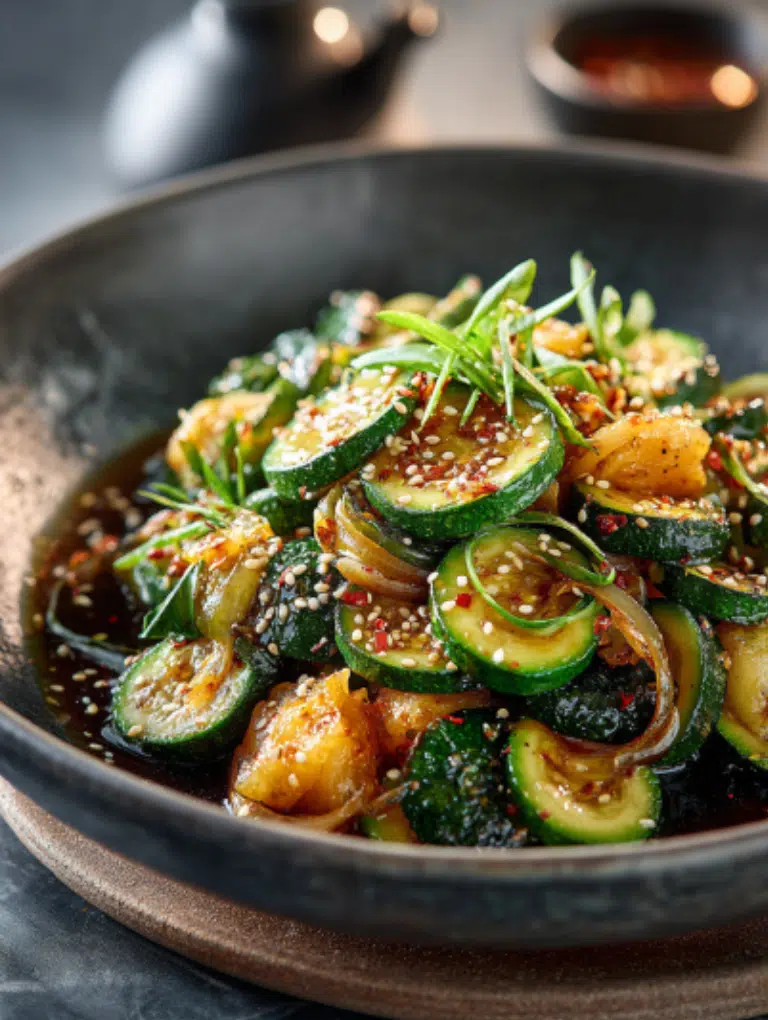
Serving Ideas
- Pair with hibachi fried rice or noodles, or add a Detox Island Green Smoothie for a full steakhouse-style spread.
- Serve alongside grilled steak, shrimp, or chicken, and sip a natural mounjaro green tea for a balanced dinner.
- Add a drizzle of yum yum sauce or mustard sauce, then round out the meal with for that restaurant finish.
Storage
- Refrigerator: Store leftovers in an airtight container for up to 3 days, following USDA FSIS leftovers guidance.
- Freezer: Not recommended, as zucchini becomes watery after thawing, per University of Nebraska–Lincoln Extension.
Reheating
- Skillet or wok: Reheat over medium-high heat for 2–3 minutes to revive texture.
- Air fryer: A quick 2–3 minutes at 375°F crisps the edges again.
- Microwave: Works in a pinch, but may soften zucchini more.
Variations
- Spicy version: Add crushed red pepper flakes or a drizzle of sriracha.
- Mushroom mix: Toss in sliced mushrooms for extra umami.
- Low-sodium: Swap soy sauce for coconut aminos and reduce added salt.
- Garlic-butter style: Stir in a pat of butter at the end for a rich, silky glaze.
Nutritional Information
Nutrition Facts (per serving)
| Nutrient | Amount |
|---|---|
| Calories | 61 kcal |
| Protein | 1 g |
| Fat | 5 g |
| Carbohydrates | 4 g |
| Fiber | 1 g |
| Sodium | 432 mg |
| Potassium | 212 mg |
| Vitamin C | 9 mg (10% DV) |
Health Benefits
- Zucchini: Low in calories and rich in water and potassium, supporting hydration and heart health, per Cleveland Clinic.
- Onions: Add antioxidants and natural sweetness without heavy calories.
- Garlic & Ginger: Offer anti-inflammatory and immune-supporting properties.
- Sesame oil: Provides healthy fats that bring nutty depth of flavor.
Tip: If you swap or add ingredients, use tools like MyFitnessPal or Cronometer to recalculate nutrition values for accuracy.
Conclusion
Hibachi zucchini is the kind of side dish that proves simple can also be unforgettable. With just a few pantry staples and a quick stir-fry, you get vegetables that are tender-crisp, savory, and full of that Japanese steakhouse flavor. The balance of garlic, ginger, soy sauce, and sesame oil turns humble zucchini into something special you’ll want on repeat.
Whether you’re serving it with fried rice, noodles, or grilled protein, this recipe fits right in and adds fresh, vibrant flavor to the table. It’s fast enough for a weeknight but impressive enough for guests.
Tried this recipe? Leave a comment and a star rating below I’d love to hear how it turned out in your kitchen. And if you made a fun variation, share it so others can try too. Don’t forget to save and share this recipe on Pinterest or Facebook so more people can enjoy hibachi zucchini at home.
Frequently Asked Questions
Can I make hibachi zucchini without soy sauce?
Yes. Tamari or coconut aminos are excellent alternatives if you want a gluten-free or lower-sodium option. They give the same savory depth without losing flavor.
What oil works best for hibachi zucchini at home?
A neutral, high smoke point oil like vegetable, canola, or safflower oil works best. Add sesame oil at the end for flavor rather than using it for high-heat cooking.
How do I keep the zucchini from turning soggy?
Cut zucchini into even sticks, cook over medium-high heat, and avoid overcrowding the pan. Quick cooking at high heat helps maintain that tender-crisp bite.
Can I add mushrooms or other vegetables?
Absolutely. Mushrooms, bell peppers, or broccoli make great additions. Just adjust cooking time slightly since some vegetables release more moisture than zucchini.
How do I make this gluten free?
Use tamari or coconut aminos instead of soy sauce, and double-check that your sesame oil and any garnishes are labeled gluten free.
Is hibachi zucchini freezer friendly?
No. Zucchini contains a lot of water, which makes it mushy once thawed. It’s best enjoyed fresh or stored in the fridge for a few days.
What sauce pairs best with hibachi vegetables?
Yum yum sauce and mustard sauce are classic choices. A drizzle of sriracha mayo or teriyaki glaze also works well if you want something different.

